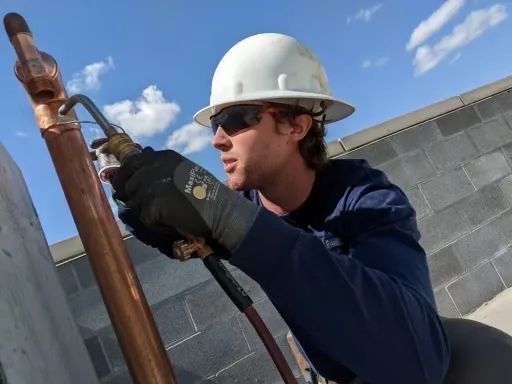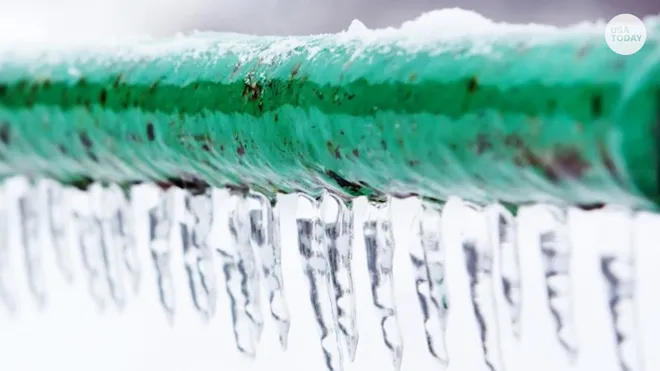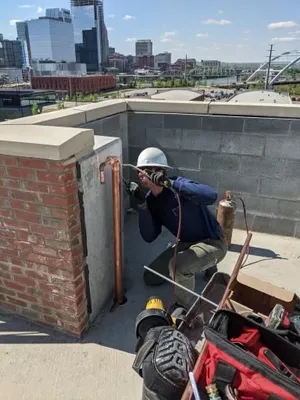How to keep your pipes from freezing when temperatures dip below zero
From skiing to ice skating and building snowmen to drinking hot cocoa, cold weather is great for a slew of things.
But when temperatures dip below freezing during winter, failure to prepare for frigid weather can cause major damage to homes and not only cause headaches for homeowners but cost them thousands of dollars in repairs.
Here's how to to prepare for your home during cold weather and how to keep your pipes from bursting.

Check your local weather forecast daily
Freeze warnings are issued by the National Weather Service.
To find out when temperatures are likely to dip below freezing, visit the weather service's website at weather.gov.
USA TODAY also tracks weather watches and warnings nationwide, which you can check anytime here.
Ready to kiss winter goodbye?Here's when the first day of spring is in 2024.
Thermostats matter
Being prepared is key to preventing frozen pipes, Prime Drain Cleaning and Plumbing Owner Brycen Sperlich told USA TODAY.
"Open cupboards and vanities to warm pipes," said Sperlich, whose company is based in Middle Tennessee. "That is something I've done before when temps are getting into the teens. Open up a cabinet allows more heat to get to the pipes."
He also recommends setting home thermostats no lower than 60 degrees.
How to properly drip your faucets
Water expands when it freezes, Sperlich said, so people should drip indoor facets when temps dip below 32 degrees.
Just make sure you drip the farthest faucet from your main valve.
"You don't have to drip them all," he said. "One or two is fine."

Which pipes freeze the most?
Here are the pipes The Red Cross, says freeze most frequently in homes:
- Pipes exposed to "severe cold" including outdoor hose bibs, swimming pool supply lines, and water sprinkler lines. (If you have swimming pool or sprinkler supply lines, don't forget to drain them too.)
- Water supply pipes in unheated interior areas including basements, crawl spaces, attics, garages and cabinets.
- Those running against exterior walls that "have little or no insulation."
Massive solar flare reported:NOAA detects largest solar flare since 2017.
How do I find my main water shut off valve?
According to a fact sheet from protectyourpipes.org, look for the main valve where the water supply enters your home. It's usually in the basement, the garage or a concrete metal box near your street.
Mark the valve with brightly colored paint or tape so you can find it if it is dark.
If the valve is outside, lift its cover and use a crescent wrench to turn the water off.
"Some older homes don't have one (a main water valve) so if you don't, it's important to know where your meter is," Sperlich said.
Outside preparation
Before the temperature drops below 32 degrees, outdoor water spigots attached to homes should be opened to allow to drain water out.
They should also be covered.

Faucet covers are fairly inexpensive and can be found online at retailers including Amazon, Walmart and various home improvement stores like Home Depot or Lowes.
They are simple and quick to attach. In a financial pinch? Cover one with a thick, waterproof insulated item like a glove or wool sock, Sperlich said.
What to do if your household pipes burst
According to a protectyourpipes.org fact sheet, if a household pipes bursts, immediately shut off your main water valve and call a licensed plumber.
According to Thumbtack, an American home services website the national average cost to fix a burst pipe ranges from $400 to $1,500. Pinhole leaks cost anywhere from $150 to $2,540 and to unfreeze broken pipes it costs about $200.
Hourly plumber rates for pipe repair range from $55-$195 per hour but some plumbers who charge by the hour charge extra for emergency response or outside normal business hours.
Get multiple estimates
When hunting for a plumber, make sure to ask for multiple estimates. They are usually free, but it depends on the company.
Thumbtack also recommends people ensure they hire a professional, licenced plumber.
"Not only does this ensure you're hiring a qualified, experienced pro, but it can protect you in case anything goes wrong," the business says.

Natalie Neysa Alund is a senior reporter for USA TODAY. Reach her at nalund@usatoday.com and follow her on X @nataliealund.
Disclaimer: The copyright of this article belongs to the original author. Reposting this article is solely for the purpose of information dissemination and does not constitute any investment advice. If there is any infringement, please contact us immediately. We will make corrections or deletions as necessary. Thank you.



